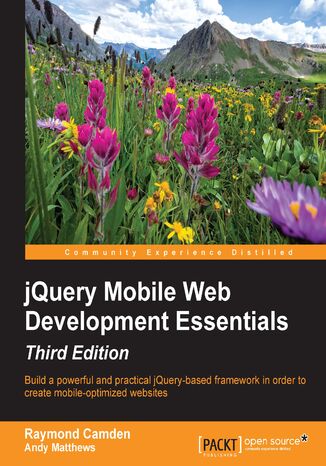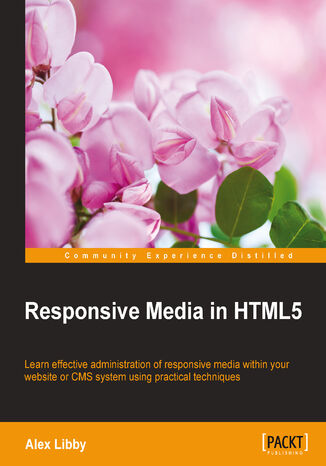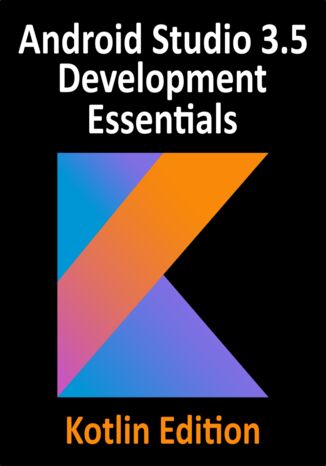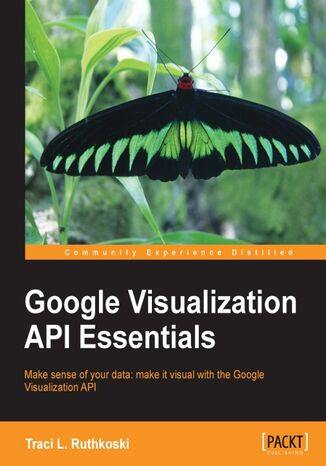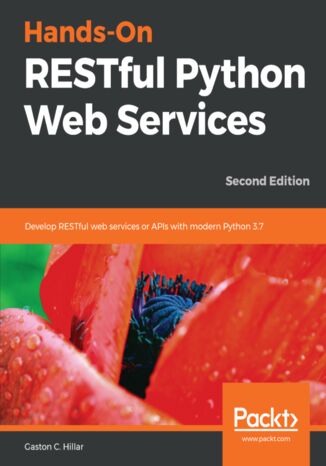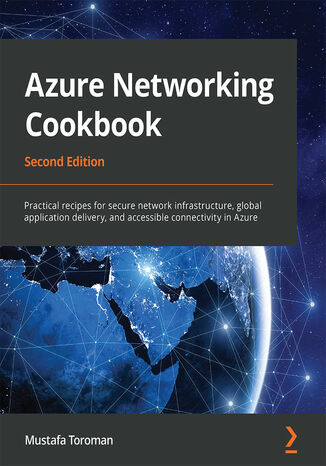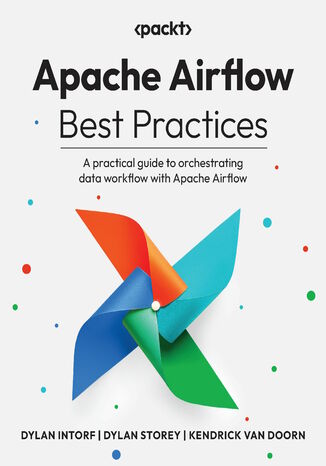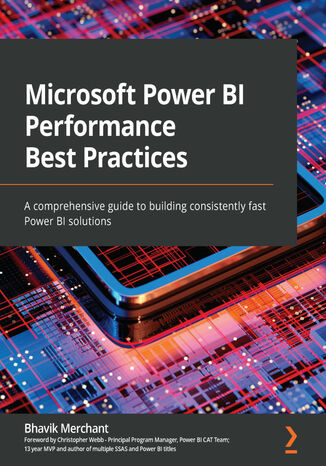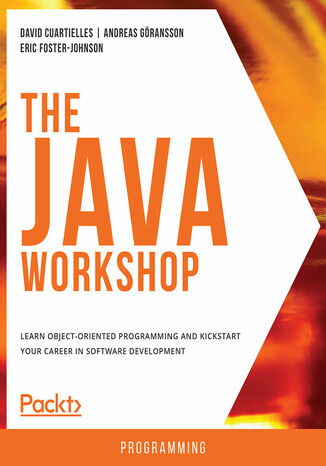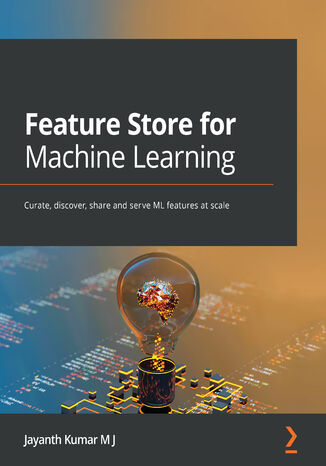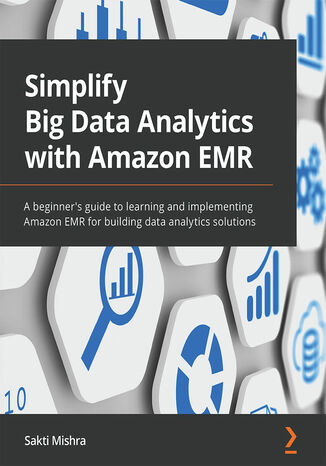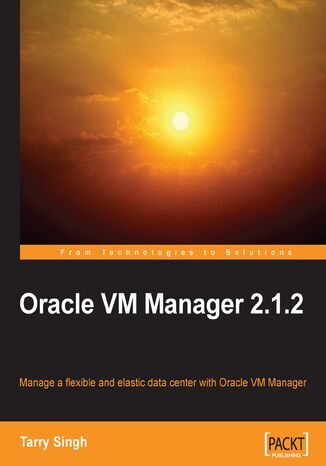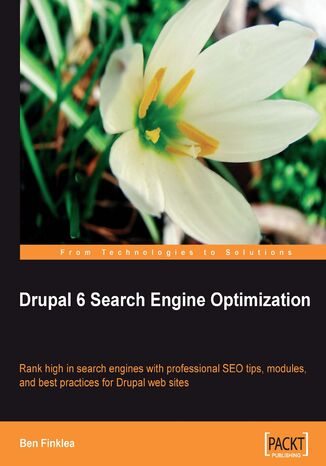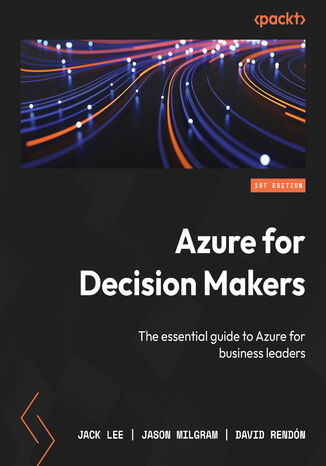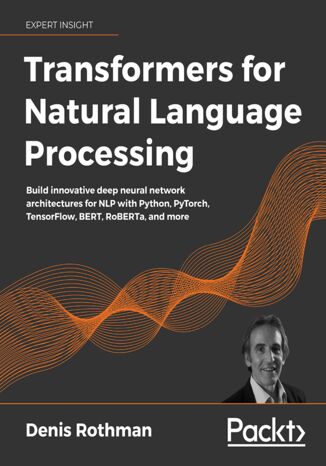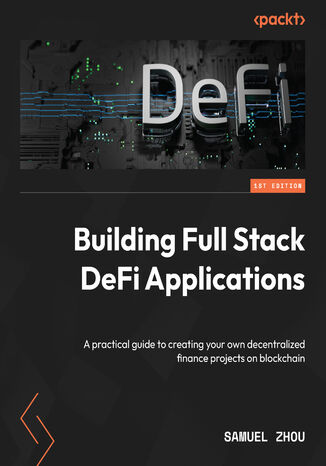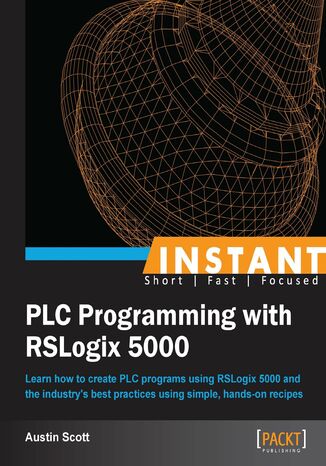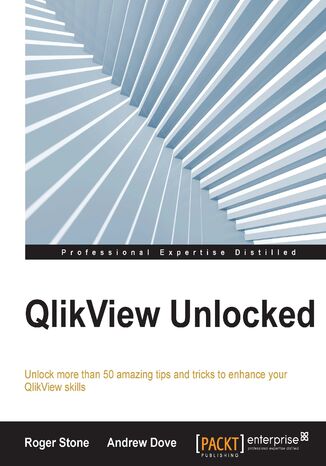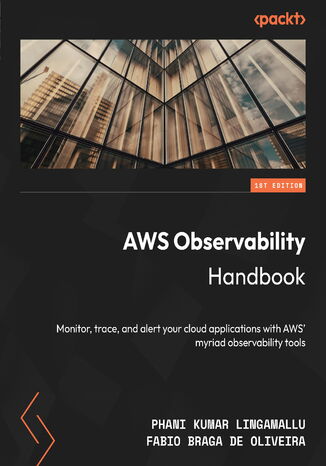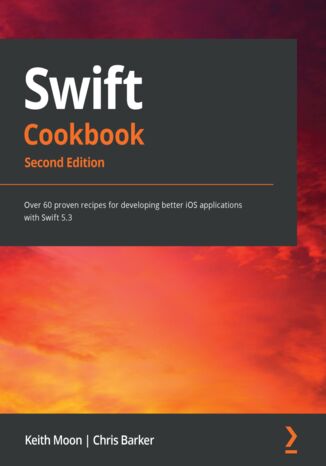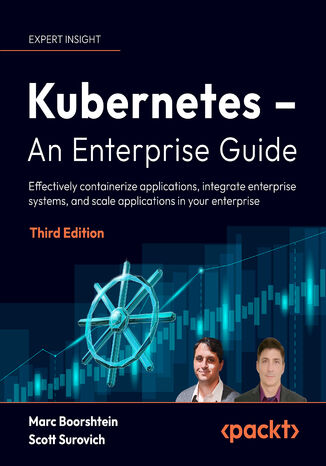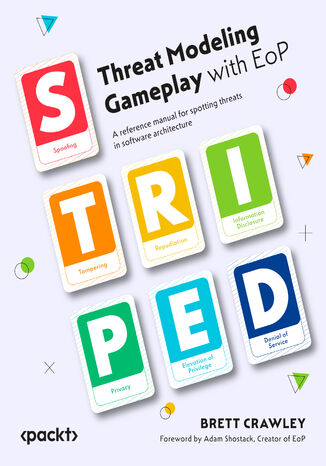Kategorie
-
- Bitcoin
- Bizneswoman
- Coaching
- Controlling
- E-biznes
- Ekonomia
- Finanse
- Giełda i inwestycje
- Kompetencje osobiste
- Komputer w biurze
- Komunikacja i negocjacje
- Mała firma
- Marketing
- Motywacja
- Multimedialne szkolenia
- Nieruchomości
- Perswazja i NLP
- Podatki
- Polityka społeczna
- Poradniki
- Prezentacje
- Przywództwo
- Public Relation
- Raporty, analizy
- Sekret
- Social Media
- Sprzedaż
- Start-up
- Twoja kariera
- Zarządzanie
- Zarządzanie projektami
- Zasoby ludzkie (HR)
-
- Architektura i wnętrza
- BHP
- Biznes i Ekonomia
- Dom i ogród
- E-Biznes
- Ekonomia i finanse
- Ezoteryka
- Finanse
- Finanse osobiste
- Firma
- Fotografia
- Informatyka
- Kadry i płace
- Kobieca
- Komputery, Excel
- Księgowość
- Kultura i literatura
- Naukowe i akademickie
- Ochrona środowiska
- Opiniotwórcze
- Oświata
- Podatki
- Podróże
- Psychologia
- Religia
- Rolnictwo
- Rynek książki i prasy
- Transport i Spedycja
- Zdrowie i uroda
-
- Aplikacje biurowe
- Bazy danych
- Bioinformatyka
- Biznes IT
- CAD/CAM
- Digital Lifestyle
- DTP
- Elektronika
- Fotografia cyfrowa
- Grafika komputerowa
- Gry
- Hacking
- Hardware
- IT w ekonomii
- Pakiety naukowe
- Podręczniki szkolne
- Podstawy komputera
- Programowanie
- Programowanie mobilne
- Serwery internetowe
- Sieci komputerowe
- Start-up
- Systemy operacyjne
- Sztuczna inteligencja
- Technologia dla dzieci
- Webmasterstwo
-
- Antologie
- Ballada
- Biografie i autobiografie
- Dla dorosłych
- Dramat
- Dzienniki, pamiętniki, listy
- Epos, epopeja
- Esej
- Fantastyka i science-fiction
- Felietony
- Fikcja
- Humor, satyra
- Inne
- Klasyczna
- Kryminał
- Literatura faktu
- Literatura piękna
- Mity i legendy
- Nobliści
- Nowele
- Obyczajowa
- Okultyzm i magia
- Opowiadania
- Pamiętniki
- Podróże
- Poemat
- Poezja
- Polityka
- Popularnonaukowa
- Powieść
- Powieść historyczna
- Proza
- Przygodowa
- Publicystyka
- Reportaż
- Romans i literatura obyczajowa
- Sensacja
- Thriller, Horror
- Wywiady i wspomnienia
-
- Archeologia
- Bibliotekoznawstwo
- Filmoznawstwo
- Filologia
- Filologia polska
- Filozofia
- Finanse i bankowość
- Geografia
- Gospodarka
- Handel. Gospodarka światowa
- Historia i archeologia
- Historia sztuki i architektury
- Kulturoznawstwo
- Lingwistyka
- Literaturoznawstwo
- Logistyka
- Matematyka
- Medycyna
- Nauki humanistyczne
- Pedagogika
- Pomoce naukowe
- Popularnonaukowa
- Pozostałe
- Psychologia
- Socjologia
- Teatrologia
- Teologia
- Teorie i nauki ekonomiczne
- Transport i spedycja
- Wychowanie fizyczne
- Zarządzanie i marketing
-
- BHP
- Historia
- Kodeks drogowy. Prawo jazdy
- Nauki prawne
- Ochrona zdrowia
- Ogólne, kompendium wiedzy
- Podręczniki akademickie
- Pozostałe
- Prawo budowlane i lokalowe
- Prawo cywilne
- Prawo finansowe
- Prawo gospodarcze
- Prawo gospodarcze i handlowe
- Prawo karne
- Prawo karne. Przestępstwa karne. Kryminologia
- Prawo międzynarodowe
- Prawo międzynarodowe i zagraniczne
- Prawo ochrony zdrowia
- Prawo oświatowe
- Prawo podatkowe
- Prawo pracy i ubezpieczeń społecznych
- Prawo publiczne, konstytucyjne i administracyjne
- Prawo rodzinne i opiekuńcze
- Prawo rolne
- Prawo socjalne, prawo pracy
- Prawo Unii Europejskiej
- Przemysł
- Rolne i ochrona środowiska
- Słowniki i encyklopedie
- Zamówienia publiczne
- Zarządzanie
-
- Afryka
- Albumy
- Ameryka Południowa
- Ameryka Środkowa i Północna
- Australia, Nowa Zelandia, Oceania
- Austria
- Azja
- Bałkany
- Bliski Wschód
- Bułgaria
- Chiny
- Chorwacja
- Czechy
- Dania
- Egipt
- Estonia
- Europa
- Francja
- Góry
- Grecja
- Hiszpania
- Holandia
- Islandia
- Litwa
- Łotwa
- Mapy, Plany miast, Atlasy
- Miniprzewodniki
- Niemcy
- Norwegia
- Podróże aktywne
- Polska
- Portugalia
- Pozostałe
- Przewodniki po hotelach i restauracjach
- Rosja
- Rumunia
- Słowacja
- Słowenia
- Szwajcaria
- Szwecja
- Świat
- Turcja
- Ukraina
- Węgry
- Wielka Brytania
- Włochy
-
- Filozofie życiowe
- Kompetencje psychospołeczne
- Komunikacja międzyludzka
- Mindfulness
- Ogólne
- Perswazja i NLP
- Psychologia akademicka
- Psychologia duszy i umysłu
- Psychologia pracy
- Relacje i związki
- Rodzicielstwo i psychologia dziecka
- Rozwiązywanie problemów
- Rozwój intelektualny
- Sekret
- Seksualność
- Uwodzenie
- Wygląd i wizerunek
- Życiowe filozofie
-
- Bitcoin
- Bizneswoman
- Coaching
- Controlling
- E-biznes
- Ekonomia
- Finanse
- Giełda i inwestycje
- Kompetencje osobiste
- Komunikacja i negocjacje
- Mała firma
- Marketing
- Motywacja
- Nieruchomości
- Perswazja i NLP
- Podatki
- Polityka społeczna
- Poradniki
- Prezentacje
- Przywództwo
- Public Relation
- Sekret
- Social Media
- Sprzedaż
- Start-up
- Twoja kariera
- Zarządzanie
- Zarządzanie projektami
- Zasoby ludzkie (HR)
-
- Antologie
- Ballada
- Biografie i autobiografie
- Dla dorosłych
- Dramat
- Dzienniki, pamiętniki, listy
- Epos, epopeja
- Esej
- Fantastyka i science-fiction
- Felietony
- Fikcja
- Humor, satyra
- Inne
- Klasyczna
- Kryminał
- Literatura faktu
- Literatura piękna
- Mity i legendy
- Nobliści
- Nowele
- Obyczajowa
- Okultyzm i magia
- Opowiadania
- Pamiętniki
- Podróże
- Poezja
- Polityka
- Popularnonaukowa
- Powieść
- Powieść historyczna
- Proza
- Przygodowa
- Publicystyka
- Reportaż
- Romans i literatura obyczajowa
- Sensacja
- Thriller, Horror
- Wywiady i wspomnienia
-
- Filozofie życiowe
- Komunikacja międzyludzka
- Mindfulness
- Ogólne
- Perswazja i NLP
- Psychologia akademicka
- Psychologia duszy i umysłu
- Psychologia pracy
- Relacje i związki
- Rodzicielstwo i psychologia dziecka
- Rozwiązywanie problemów
- Rozwój intelektualny
- Sekret
- Seksualność
- Uwodzenie
- Wygląd i wizerunek
- Życiowe filozofie
jQuery Mobile is a HTML5-based touch-optimized web framework. jQuery Mobile can be used to build responsive cross-platform websites and apps for a wide range of smartphones, tablets, and desktop devices. The jQuery Mobile framework can be integrated with other mobile app frameworks such as PhoneGap, IBM Worklight, and more.Introduction to jQuery Mobile explains how to add the framework to your HTML pages to create rich, mobile-optimized web pages with minimal effort. You’ll learn how to use jQuery Mobile’s automatic enhancements and configure the framework for customized, powerful mobile-friendly websites. We then dig into forms, events, and styling. You'll see how jQuery Mobile automatically enhances content, and will find out how to use the JavaScript API to build complex sites. We’ll introduce you to how jQuery Mobile can be themed as well looking into how JavaScript can be used for deep sets of customizations. The examples are ready to run and can be used to help kick-start your own site. Along the way, you will leverage all the concepts you learn to build three sample mobile applications.
Popularity of Kotlin as an Android-compatible language keeps growing every day. This book will help you to build your own Android applications using Kotlin.Android Studio 3.5 Development Essentials Kotlin Edition first teaches you to install Android development and test environment on different operating systems. Next, you will create an Android app and a virtual device in Android studio, and install an Android application on emulators. You will test apps on physical android devices, then study Android Studio code editor, Android architecture, and the anatomy of an Android app. The focus then shifts to Kotlin language. You’ll get an overview of Kotlin language and practice converting code from Java to Kotlin. You’ll also explore Kotlin data types, operators, expressions, loops, functions, and the basics of OOP concept in Kotlin. This book will then cover Android Jetpack and how to create an example app project using ViewModel component, as well as advanced topics such as views and widgets implementation, multi-window support integration, and biometric authentication. Finally, you will learn to upload your app to the Google Play Console and handle the build process with Gradle.By the end of this book, you will have gained enough knowledge to develop powerful Android applications using Kotlin.
There's a lot of data in our world, and visual representations are often the best method of making sense of it all. Yet, it should not take an army of programmers and analysts to create visualizations in order to make data useful. The Google Visualization API is accessible to novice and advanced programmers alike, making data useful to more people.Google Visualization API Essentials will show you how to create interactive data displays with very little code. The API, combined with Google Spreadsheets and Fusion Tables, is a complete system, from data management to analytical displays. Not only is it simple to learn, but the Google Visualization API can also be viewed as a first step to learning additional Google APIs.Google Visualization API Essentials uses both methodology overviews and hands-on examples with real data to introduce chart and graph creation on the Google platform. Topics are presented from various aspects, including Google Spreadsheets and Fusion Tables, and Graphic User Interfaces. An overview of the various API development environments available to developers is also covered. Basic and advanced charts, data source connectivity, style formatting, and publishing options are also explored in depth.Google Visualization API Essentials brings the arsenal of Google Visualizations into the web developer toolkit.
Data Lakehouse in Action. Architecting a modern and scalable data analytics platform
The Data Lakehouse architecture is a new paradigm that enables large-scale analytics. This book will guide you in developing data architecture in the right way to ensure your organization's success.The first part of the book discusses the different data architectural patterns used in the past and the need for a new architectural paradigm, as well as the drivers that have caused this change. It covers the principles that govern the target architecture, the components that form the Data Lakehouse architecture, and the rationale and need for those components. The second part deep dives into the different layers of Data Lakehouse. It covers various scenarios and components for data ingestion, storage, data processing, data serving, analytics, governance, and data security. The book's third part focuses on the practical implementation of the Data Lakehouse architecture in a cloud computing platform. It focuses on various ways to combine the Data Lakehouse pattern to realize macro-patterns, such as Data Mesh and Data Hub-Spoke, based on the organization's needs and maturity level. The frameworks introduced will be practical and organizations can readily benefit from their application.By the end of this book, you'll clearly understand how to implement the Data Lakehouse architecture pattern in a scalable, agile, and cost-effective manner.
Python is the language of choice for millions of developers worldwide that builds great web services in RESTful architecture. This second edition of Hands-On RESTful Python Web Services will cover the best tools you can use to build engaging web services.This book shows you how to develop RESTful APIs using the most popular Python frameworks and all the necessary stacks with Python, combined with related libraries and tools. You’ll learn to incorporate all new features of Python 3.7, Flask 1.0.2, Django 2.1, Tornado 5.1, and also a new framework, Pyramid. As you advance through the chapters, you will get to grips with each of these frameworks to build various web services, and be shown use cases and best practices covering when to use a particular framework.You’ll then successfully develop RESTful APIs with all frameworks and understand how each framework processes HTTP requests and routes URLs. You’ll also discover best practices for validation, serialization, and deserialization. In the concluding chapters, you will take advantage of specific features available in certain frameworks such as integrated ORMs, built-in authorization and authentication, and work with asynchronous code. At the end of each framework, you will write tests for RESTful APIs and improve code coverage.By the end of the book, you will have gained a deep understanding of the stacks needed to build RESTful web services.
Azure's networking services enable organizations to manage their networks effectively. With the Azure Networking Cookbook, you’ll see how Azure paves the way for an enterprise to achieve reliable performance and secure connectivity.This updated second edition will take you through the latest networking features in Azure. The book starts with an introduction to Azure networking, covering basics such as creating Azure virtual networks, designing address spaces, and creating subnets. You’ll create and manage network security groups, application security groups, and IP addresses in Azure using easy-to-follow recipes. As you progress through the book, you’ll explore various aspects such as DNS and routing, load balancers, Traffic Manager, and site-to-site, point-to-site, and VNet-to-VNet connections. This cookbook covers all the functions crucial to understanding cloud networking practices and being able to plan, implement, and secure your network infrastructure with Azure. You’ll not only upscale your current environment but also get well-versed with monitoring, diagnosing, and ensuring secure connectivity. The book will help you grasp best practices as you learn how to create a robust environment.By the end of this Azure cookbook, you’ll have gained hands-on experience developing cost-effective solutions that can facilitate efficient connectivity in your organization.
Apache Airflow Best Practices. A practical guide to orchestrating data workflow with Apache Airflow
Dylan Intorf, Dylan Storey, Kendrick van Doorn
Data professionals face the challenge of managing complex data pipelines, orchestrating workflows across diverse systems, and ensuring scalable, reliable data processing. This definitive guide to mastering Apache Airflow, written by experts in engineering, data strategy, and problem-solving across tech, financial, and life sciences industries, is your key to overcoming these challenges. Covering everything from Airflow fundamentals to advanced topics such as custom plugin development, multi-tenancy, and cloud deployment, this book provides a structured approach to workflow orchestration. You’ll start with an introduction to data orchestration and Apache Airflow 2.x updates, followed by DAG authoring, managing Airflow components, and connecting to external data sources. Through real-world use cases, you’ll learn how to implement ETL pipelines and orchestrate ML workflows in your environment, and scale Airflow for high availability and performance. You’ll also learn how to deploy Airflow in cloud environments, tackle operational considerations for scaling, and apply best practices for CI/CD and monitoring.By the end of this book, you’ll be proficient in operating and using Apache Airflow, authoring high-quality workflows in Python, and making informed decisions crucial for production-ready Airflow implementations.
Bhavik Merchant, Christopher Webb
This book comprehensively covers every layer of Power BI, from the report canvas to data modeling, transformations, storage, and architecture.Developers and architects working with any area of Power BI will be able to put their knowledge to work with this practical guide to design and implement at every stage of the analytics solution development process. This book is not only a unique collection of best practices and tips, but also provides you with a hands-on approach to identifying and fixing common performance issues.Complete with explanations of essential concepts and practical examples, you’ll learn about common design choices that affect performance and consume more resources and how to avoid these problems. You’ll grasp the general architectural issues and settings that broadly affect most solutions. As you progress, you’ll walk through each layer of a typical Power BI solution, learning how to ensure your designs can handle scale while not sacrificing usability. You’ll focus on the data layer and then work your way up to report design. We will also cover Power BI Premium and load testing.By the end of this Power BI book, you’ll be able to confidently maintain well-performing Power BI solutions with reduced effort and know how to use freely available tools and a systematic process to monitor and diagnose performance problems.
David Cuartielles, Andreas Göransson, Eric Foster-Johnson
Java is a versatile, popular programming language used across a wide range of industries. Learning how to write effective Java code can take your career to the next level, and The Java Workshop will help you do just that. This book is designed to take the pain out of Java coding and teach you everything you need to know to be productive in building real-world software.The Workshop starts by showing you how to use classes, methods, and the built-in Collections API to manipulate data structures effortlessly. You’ll dive right into learning about object-oriented programming by creating classes and interfaces and making use of inheritance and polymorphism. After learning how to handle exceptions, you’ll study the modules, packages, and libraries that help you organize your code. As you progress, you’ll discover how to connect to external databases and web servers, work with regular expressions, and write unit tests to validate your code. You’ll also be introduced to functional programming and see how to implement it using lambda functions. By the end of this Workshop, you’ll be well-versed with key Java concepts and have the knowledge and confidence to tackle your own ambitious projects with Java.
Feature Store for Machine Learning. Curate, discover, share and serve ML features at scale
Feature store is one of the storage layers in machine learning (ML) operations, where data scientists and ML engineers can store transformed and curated features for ML models. This makes them available for model training, inference (batch and online), and reuse in other ML pipelines. Knowing how to utilize feature stores to their fullest potential can save you a lot of time and effort, and this book will teach you everything you need to know to get started.Feature Store for Machine Learning is for data scientists who want to learn how to use feature stores to share and reuse each other's work and expertise. You’ll be able to implement practices that help in eliminating reprocessing of data, providing model-reproducible capabilities, and reducing duplication of work, thus improving the time to production of the ML model. While this ML book offers some theoretical groundwork for developers who are just getting to grips with feature stores, there's plenty of practical know-how for those ready to put their knowledge to work. With a hands-on approach to implementation and associated methodologies, you'll get up and running in no time.By the end of this book, you’ll have understood why feature stores are essential and how to use them in your ML projects, both on your local system and on the cloud.
Amazon EMR, formerly Amazon Elastic MapReduce, provides a managed Hadoop cluster in Amazon Web Services (AWS) that you can use to implement batch or streaming data pipelines. By gaining expertise in Amazon EMR, you can design and implement data analytics pipelines with persistent or transient EMR clusters in AWS.This book is a practical guide to Amazon EMR for building data pipelines. You'll start by understanding the Amazon EMR architecture, cluster nodes, features, and deployment options, along with their pricing. Next, the book covers the various big data applications that EMR supports. You'll then focus on the advanced configuration of EMR applications, hardware, networking, security, troubleshooting, logging, and the different SDKs and APIs it provides. Later chapters will show you how to implement common Amazon EMR use cases, including batch ETL with Spark, real-time streaming with Spark Streaming, and handling UPSERT in S3 Data Lake with Apache Hudi. Finally, you'll orchestrate your EMR jobs and strategize on-premises Hadoop cluster migration to EMR. In addition to this, you'll explore best practices and cost optimization techniques while implementing your data analytics pipeline in EMR.By the end of this book, you'll be able to build and deploy Hadoop- or Spark-based apps on Amazon EMR and also migrate your existing on-premises Hadoop workloads to AWS.
Virtualization is taking the technology world by storm and dramatically helping organizations save money. Oracle VM is free and forked from the open source Xen hypervisor, which brings down your upfront costs for an agile data center. The robust capabilities and easy-to-use web interface of Oracle VM Manager helps administrators manage their Internal Data Center from anywhere in the world, helping us come closer to ubiquitous computing.This practical book will give you hands-on experience on how to manage your Virtual Machines using Oracle VM Manager. Equipped with step-by-step installation and management information you will not only learn to manage your Virtual Data Center but also will include this guide among the books you consider most essential.This book will take you into the various methods of importing Virtual Machines. You will learn to import VMs through HTTP/FTP, Repository servers, and even import other VM formats such as VMware VMs. You will also learn about the Xen utilities such as xm, xentop, and virsh. You will learn to manage your VMs through the simple and intuitive web interface of Oracle VM Manager. No matter how compact it may seem, this book covers all the essentials while keeping your learning experience to the point. The book has been deliberately written in a conversational manner so that you feel at home while learning Oracle VM Manager.
The earlier a site appears in the search results list, the more visitors it will receive from the search engine. Despite several advantages, many Drupal sites suffer with poor search engine standings. Perhaps you are aware of the importance of SEO for increasing traffic to your site, but do you know how to apply it to your Drupal site? Here comes the first book about search engine optimization for Drupal sites.This practical, step-by-step guide takes the mystery out of Drupal search engine optimization (SEO) by showing you the tricks of today's top marketing pros to achieve top ranking in the search engines. This isn't a book of Drupal SEO theory ñ it's a practical guide showing you which modules to install, which settings to use, and dozens of the most closely guarded tricks of the trade to get your web site optimized, higher in the search engines, and more profitable.With this book and basic Drupal 6 knowledge ñ how to log in, create content, and install modules ñ you can build a perfectly search engine optimized web site. Each chapter uses easy, step-by-step instructions to walk you through the Drupal SEO modules, configurations, and content you will need to increase traffic on your web site. You start by reviewing the modules and tools that you should use to optimize your site, how to set up your analytics, and so on. Each subsequent chapter gives detailed instructions on implementing these features in Drupal. Later chapters cover topics like site organization, A/B testing, and automatic content tagging to maximize SEO and increase the conversion rate of your web site. When you have completed the book, you will have implemented the changes to your site required to rank well in the search engines. If you want to maximize the return on investment of your Drupal 6 web site and gain a significant advantage over competitors who are not using Drupal, then this book is for you. Imagine how great you'll feel when your site is optimized to increase the number of visitors and convert them into paying customers.
Azure for Decision Makers. The essential guide to Azure for business leaders
Jack Lee, Jason Milgram, David Rendón
Azure for Decision Makers provides a comprehensive overview of the latest updates in cloud security, hybrid cloud and multi-cloud solutions, and cloud migration in Azure. This book is a must-have introduction to the Microsoft Azure cloud platform, demonstrating the substantial scope of digital transformation and innovation that can be achieved with Azure's capabilities.The first set of chapters will get you up to speed with Microsoft Azure's evolution before showing you how to integrate it into your existing IT infrastructure. Next, you’ll gain practical insights into application migration and modernization, focusing mainly on migration planning, implementation, and best practices. Throughout the book, you’ll get the information you need to spearhead a smooth migration and modernization process, detailing Azure infrastructure as a service (IaaS) deployment, infrastructure management, and key application architectures. The concluding chapters will help you to identify and incorporate best practices for cost optimization and management, Azure DevOps, and Azure automation.By the end of this book, you’ll have learned how to lead end-to-end Azure operations for your organization and effectively cost-optimize your processes ─ from the planning and cloud migration stage through to troubleshooting.
The transformer architecture has proved to be revolutionary in outperforming the classical RNN and CNN models in use today. With an apply-as-you-learn approach, Transformers for Natural Language Processing investigates in vast detail the deep learning for machine translations, speech-to-text, text-to-speech, language modeling, question answering, and many more NLP domains with transformers.The book takes you through NLP with Python and examines various eminent models and datasets within the transformer architecture created by pioneers such as Google, Facebook, Microsoft, OpenAI, and Hugging Face.The book trains you in three stages. The first stage introduces you to transformer architectures, starting with the original transformer, before moving on to RoBERTa, BERT, and DistilBERT models. You will discover training methods for smaller transformers that can outperform GPT-3 in some cases. In the second stage, you will apply transformers for Natural Language Understanding (NLU) and Natural Language Generation (NLG). Finally, the third stage will help you grasp advanced language understanding techniques such as optimizing social network datasets and fake news identification.By the end of this NLP book, you will understand transformers from a cognitive science perspective and be proficient in applying pretrained transformer models by tech giants to various datasets.
Enter the world of Decentralized Finance (DeFi) with Building Full Stack DeFi Applications. Understand how this blockchain-based financial technology, designed to manage crypto assets, runs independently without centralized financial institutions like banks and brokerages, eliminating the fees that banks and other financial companies charge for using their services. This book will show you how DeFi solutions are built with smart contracts running on blockchains and how they allow users to gain and earn crypto assets based on the trust of the smart contracts.This book uncovers the inner workings of DeFi by guiding you through the mathematical foundations and teaching you how to build real-world DeFi products with Solidity and JavaScript. As you progress through the chapters, you’ll learn how to implement smart contracts of liquidity pools to trade cryptocurrencies and implement staking, including farming features that allow users to earn. You’ll also find out how to create asset pools that allow users to lend and borrow cryptocurrencies and generate interest. Additionally, you’ll discover how to use Web3 libraries to build the frontend of DeFi products.By the end of this book, you’ll will be well acquainted with popular tools, libraries, and design patterns for implementing a full-stack DeFi application with Web3 and Solidity.
RSLogix5000 is a user friendly IEC61131-3-compliant interface for programming the current generation of Rockwell Automation PLCs, which includes Ladder Diagrams (LD), Graphical Function Block Diagrams (FBD), Graphical Structured Text (ST), and Sequential Function Charts (SFC).Instant PLC Programming with RSLogix 5000 captures the core elements of PLC programming with RSLogix 5000 with a minimal investment of time. We will avoid getting into control theory and focus on condensing the information specific to RSLogix 5000. We have selected the key areas of RSLogix and provide a step-by-step approach to teaching them.This book start by follows the steps involved in creating a new RSLogix 5000 project and configuring racks, slots, and channels. Next, we will create routines using the various languages available in RSLogix 5000, troubleshooting and resolving issues we encounter along the way. Finally, we will dive into the advanced features, such as online changes, code generation, task management, and user-defined structures.You will also learn object-oriented PLC programming techniques using advanced features like user-defined types (UDTs) that improve the maintainability, uniformity, and readability of our routines. We also highlight the strengths and limitations of online changes and demonstrate techniques to maximize flexibility.You will learn everything you need to get up and running with RSLogix 5000 as well as best practices used by industry experts.
QlikView Unlocked. Unlock more than 50 amazing tips and tricks to enhance your QlikView skills
QlikView Unlocked will provide you with new insights to get the very best from QlikView. This book will help you to develop skills to work with data efficiently. We will cover all the secrets of unleashing the full power of QlikView, which will enable you to make better use of the tool and create better results for future projects. In the course of this book, we will walk you through techniques and best practices that will enable you to be more productive. You will gain quick insights into the tool with the help of short steps called ”keys,” which will help you discover new features of QlikView. Moving on you will learn new techniques for data visualization, scripting, data modeling, and more. This book will then cover best practices to help you establish an efficient system with improved performance. We will also teach you some tricks that will help you speed up development processes, monitor data with dashboards, and so on.By the end of this book, you will have gained beneficial tips, tricks, and techniques to enhance the overall experience of working with QlikView.
Phani Kumar Lingamallu, Fabio Braga de Oliveira
As modern application architecture grows increasingly complex, identifying potential points of failure and measuring end user satisfaction, in addition to monitoring application availability, is key. This book helps you explore AWS observability tools that provide end-to-end visibility, enabling quick identification of performance bottlenecks in distributed applications.You’ll gain a holistic view of monitoring and observability on AWS, starting from observability basics using Amazon CloudWatch and AWS X-Ray to advanced ML-powered tools such as AWS DevOps Guru. As you progress, you'll learn about AWS-managed open source services such as AWS Distro for OpenTelemetry (ADOT) and AWS managed Prometheus, Grafana, and the ELK Stack. You’ll implement observability in EC2 instances, containers, Kubernetes, and serverless apps and grasp UX monitoring. With a fair mix of concepts and examples, this book helps you gain hands-on experience in implementing end-to-end AWS observability in your applications and navigating and troubleshooting performance issues with the help of use cases. You'll also learn best practices and guidelines, such as how observability relates to the Well-Architected Framework.By the end of this AWS book, you’ll be able to implement observability and monitoring in your apps using AWS’ native and managed open source tools in real-world scenarios.
Swift is an exciting, multi-platform, general-purpose programming language, and with this book, you'll explore the features of its latest version, Swift 5.3.The book begins with an introduction to the basic building blocks of Swift 5.3, its syntax, and the functionalities of Swift constructs. You’ll then discover how Swift Playgrounds provide an ideal platform to write, execute, and debug your Swift code. As you advance through the chapters, the book will show you how to bundle variables into tuples or sets, order your data with an array, store key-value pairs with dictionaries, and use property observers. You’ll also get to grips with the decision-making and control structures in Swift, examine advanced features such as generics and operators, and explore functionalities outside of the standard library. Once you’ve learned how to build iOS applications using UIKit, you'll find out how to use Swift for server-side programming, run Swift on Linux, and investigate Vapor. Finally, you'll discover some of the newest features of Swift 5.3 using SwiftUI and Combine to build adaptive and reactive applications, and find out how to use Swift to build and integrate machine learning models along with Apple’s Vision Framework.By the end of this Swift book, you'll have discovered solutions to boost your productivity while developing code using Swift 5.3.
Marc Boorshtein, Scott Surovich, Ed Price
Kubernetes – An Enterprise Guide, Third Edition, provides a practical and up-to-date resource for navigating modern cloud-native technologies. This edition covers advanced Kubernetes deployments, security best practices, and key strategies for managing enterprise workloads efficiently.The book explores critical topics such as virtual clusters, container security, and secrets management, offering actionable insights for running Kubernetes in production environments. Learn how to transition to microservices with Istio, implement GitOps and CI/CD for streamlined deployments, and enhance security using OPA/Gatekeeper and KubeArmor.Designed for professionals, this guide equips you with the knowledge to integrate Kubernetes with industry-leading tools and optimize business-critical applications. Stay ahead in the evolving cloud landscape with strategies that drive efficiency, security, and scalability.
Threat Modeling Gameplay with EoP. A reference manual for spotting threats in software architecture
Are you looking to navigate security risks, but want to make your learning experience fun? Here's a comprehensive guide that introduces the concept of play to protect, helping you discover the threats that could affect your software design via gameplay.Each chapter in this book covers a suit in the Elevation of Privilege (EoP) card deck (a threat category), providing example threats, references, and suggested mitigations for each card. You’ll explore the methodology for threat modeling—Spoofing, Tampering, Repudiation, Information Disclosure, and Elevation of Privilege (S.T.R.I.D.E.) with Privacy deck and the T.R.I.M. extension pack. T.R.I.M. is a framework for privacy that stands for Transfer, Retention/Removal, Inference, and Minimization. Throughout the book, you’ll learn the meanings of these terms and how they should be applied. From spotting vulnerabilities to implementing practical solutions, the chapters provide actionable strategies for fortifying the security of software systems.By the end of this book, you will be able to recognize threats, understand privacy regulations, access references for further exploration, and get familiarized with techniques to protect against these threats and minimize risks.
Modern digital devices used in homes, cars, and wearables contain highly sophisticated computing capabilities composed of embedded systems that generate, receive, and process digital data streams at rates up to multiple gigabits per second. This book will show you how to use Field Programmable Gate Arrays (FPGAs) and high-speed digital circuit design to create your own cutting-edge digital systems.Architecting High-Performance Embedded Systems takes you through the fundamental concepts of embedded systems, including real-time operation and the Internet of Things (IoT), and the architecture and capabilities of the latest generation of FPGAs. Using powerful free tools for FPGA design and electronic circuit design, you’ll learn how to design, build, test, and debug high-performance FPGA-based IoT devices. The book will also help you get up to speed with embedded system design, circuit design, hardware construction, firmware development, and debugging to produce a high-performance embedded device – a network-based digital oscilloscope. You’ll explore techniques such as designing four-layer printed circuit boards with high-speed differential signal pairs and assembling the board using surface-mount components.By the end of the book, you’ll have a solid understanding of the concepts underlying embedded systems and FPGAs and will be able to design and construct your own sophisticated digital devices.

